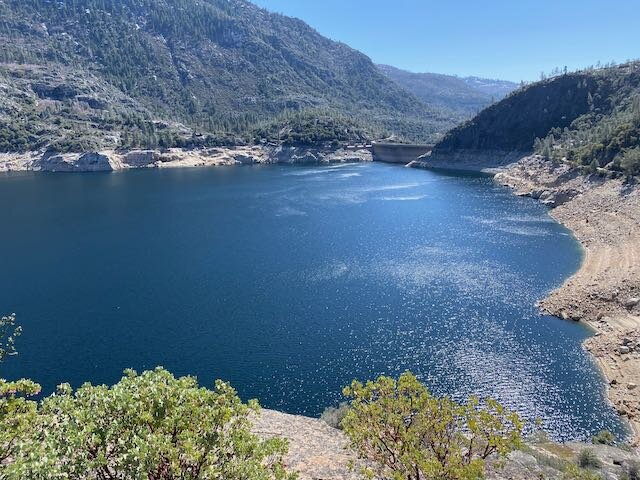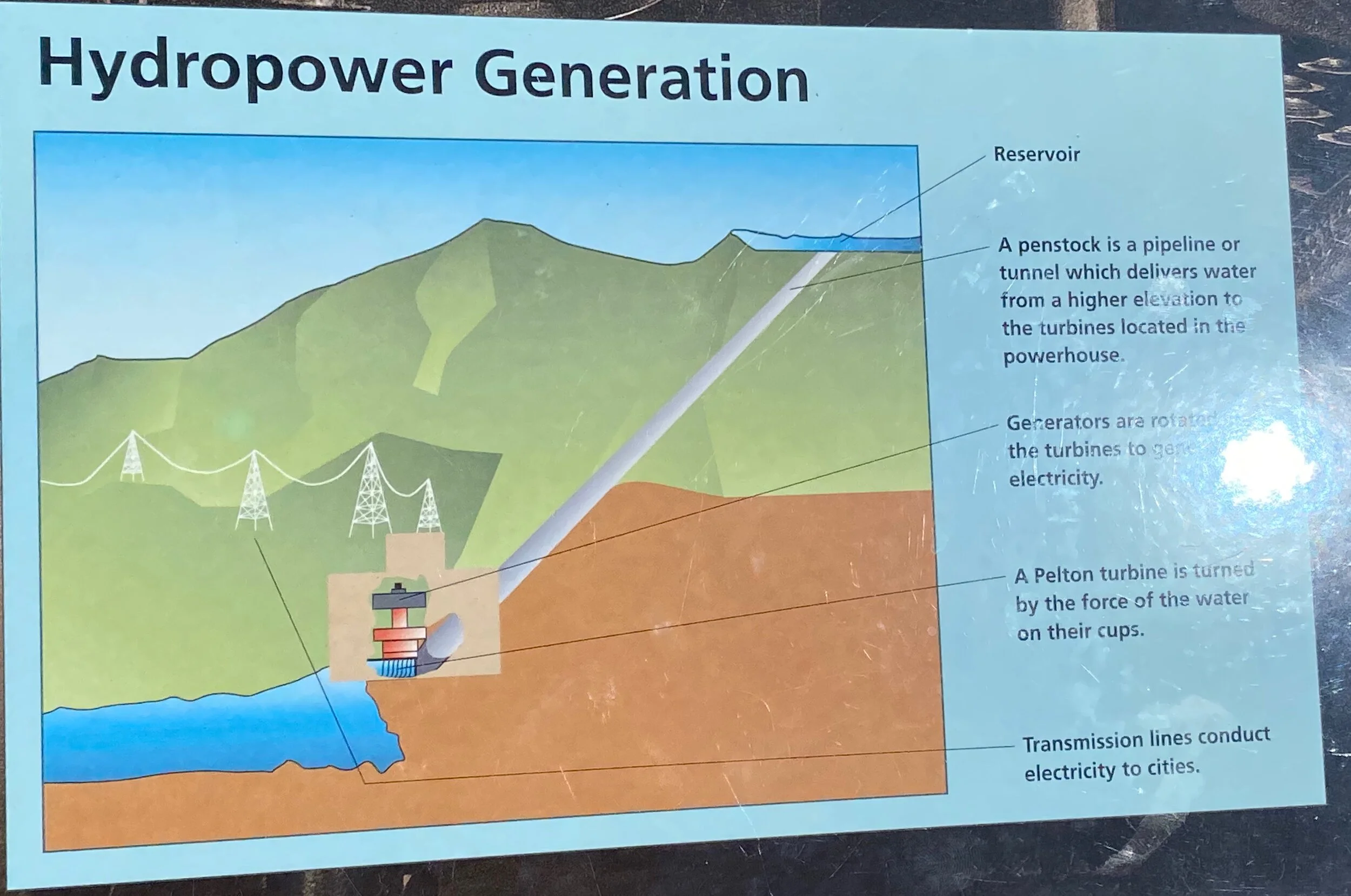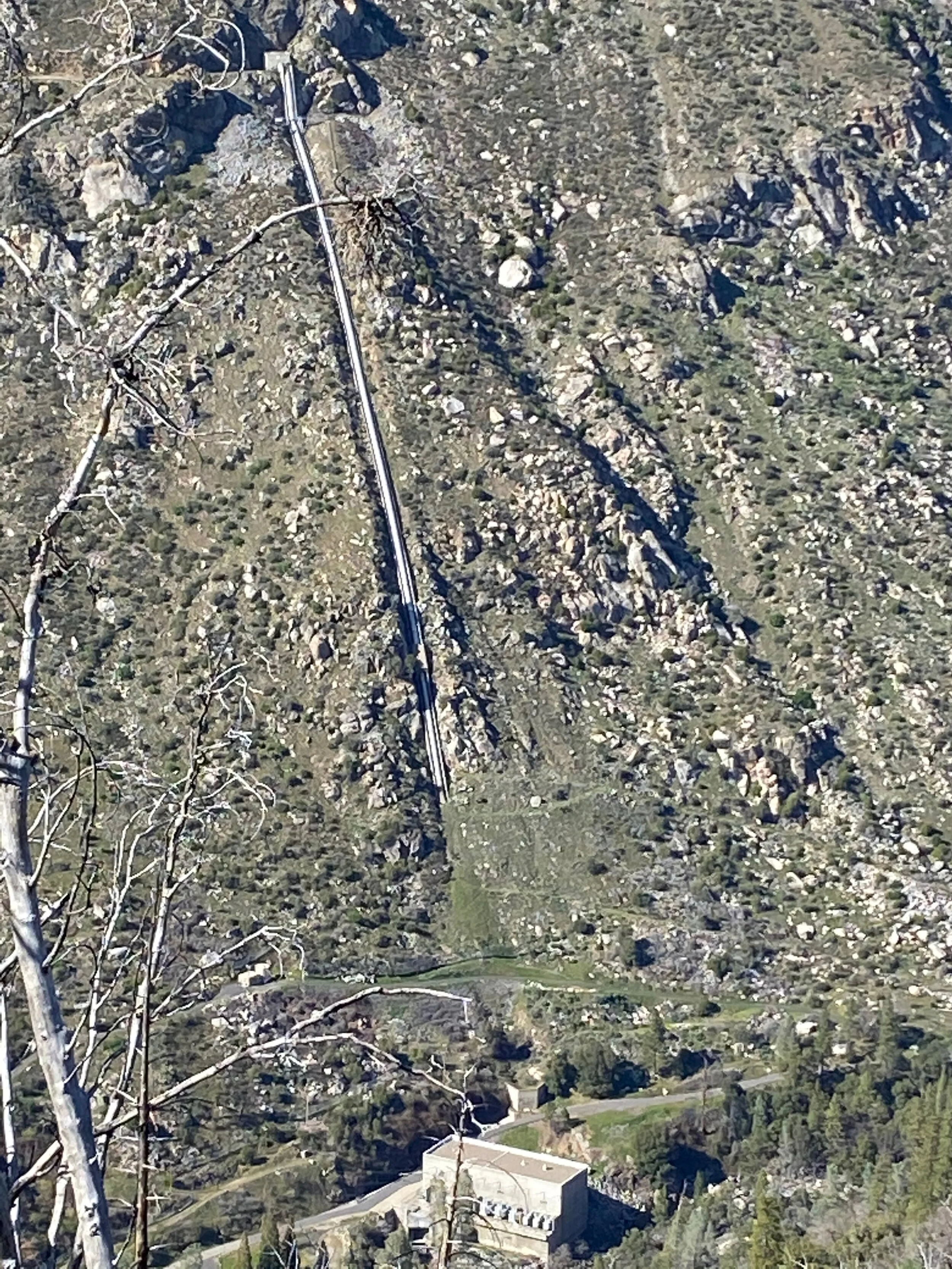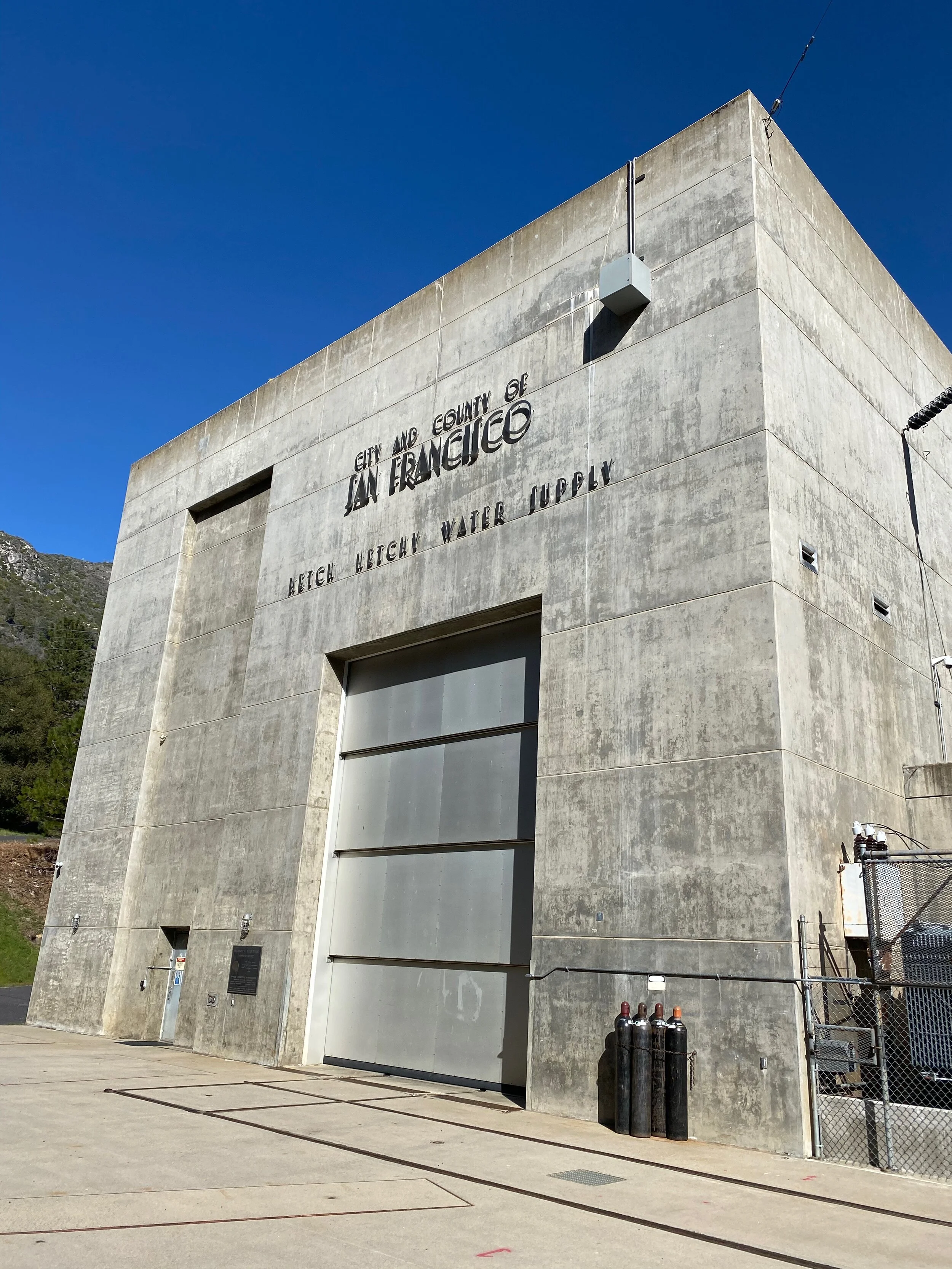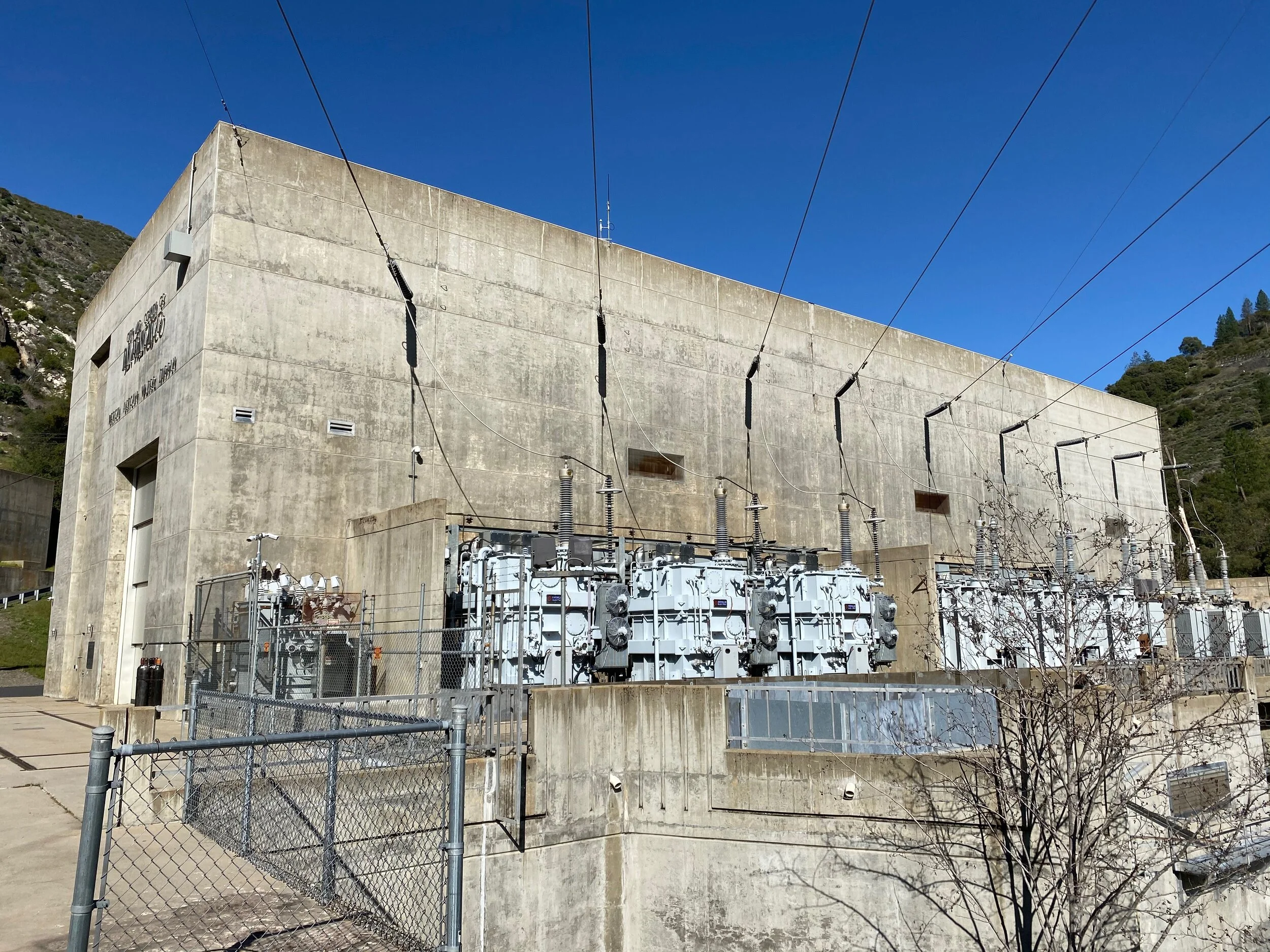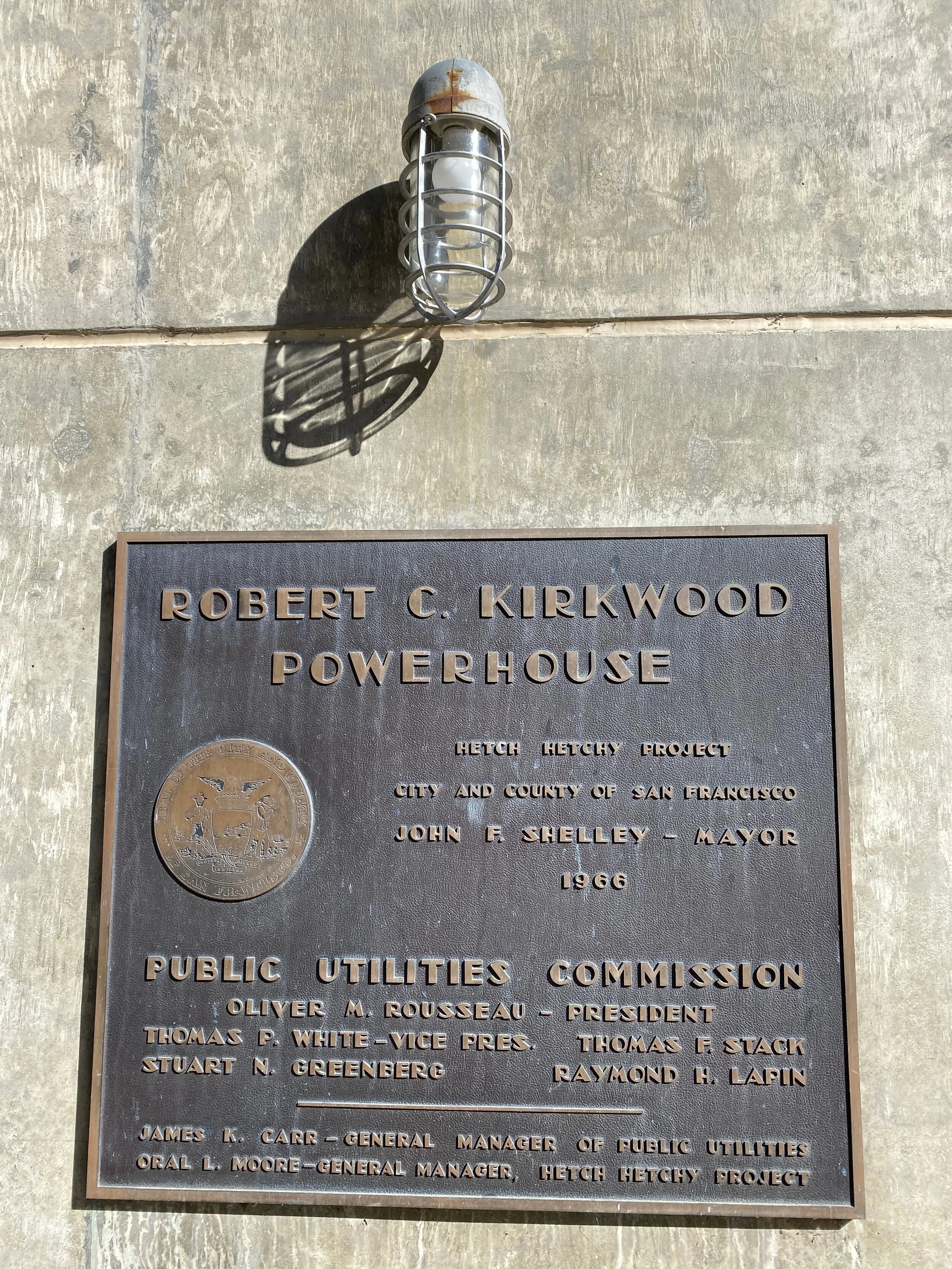Visiting Hetch Hetchy Valley to learn about hydroelectric power
A view of man-made reservoir from a hike up from the O'Shaughnessy Dam.
If it is not obvious from reading other posts on this website, let me start by sharing that I like to venture outdoors and explore the wonders of the natural world. Yosemite National Park is one of my all-time favorite destinations and on this most recent trip, I got the chance to also visit the Hetch Hetchy Valley next door and to learn more about the controversial decision to intentionally flood a region to provide clean water and reliable power to the residents of San Francisco.
A panoramic view of the Hetch Hetchy Reservoir from the dam.
There are a number of inter-related stories about this place and most of them appeal to me personally. As a hiker, I recognize and am attracted to the same natural beauty here that I see in the nearby Yosemite Valley which we have mostly left untouched. Both areas provide gorgeous scenic panoramas that combine rocks, trees, sky, water and wildlife.
As someone who marvels at the industrial achievements of our species, it is hard not to appreciate the ambitious, if not audacious project accomplished here, namely, to build (and then enlarge) a steel and concrete dam to create a new clean water reservoir to benefit millions of citizens many miles away. And this project had a very tough path forward going down as “the first great environmental controversy in the US". I encourage readers to skim this Wikipedia article for more details.
But I came here to get up close to a large-scale hydroelectric power generation system and to learn more about using water to produce clean, renewable energy.
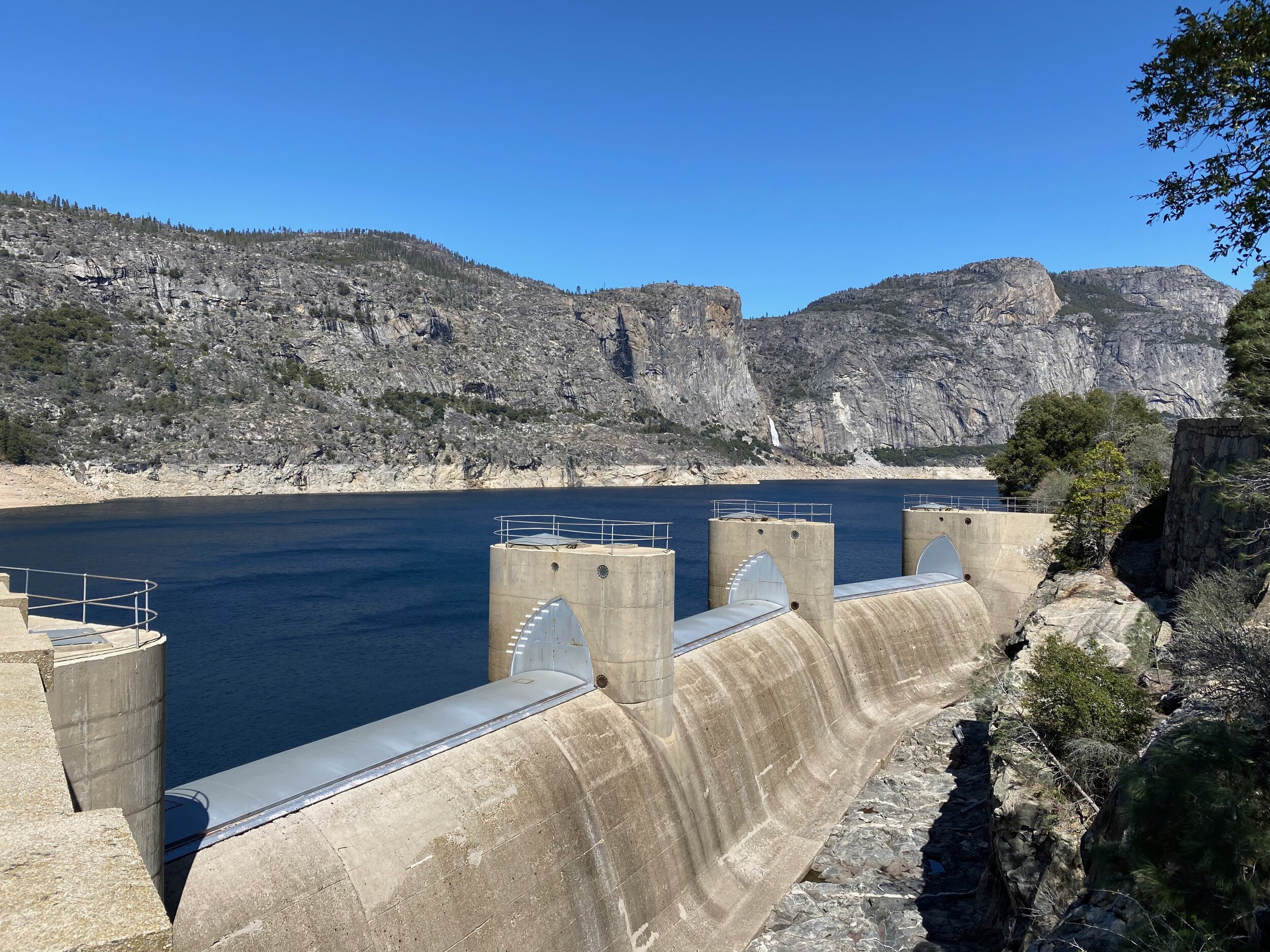
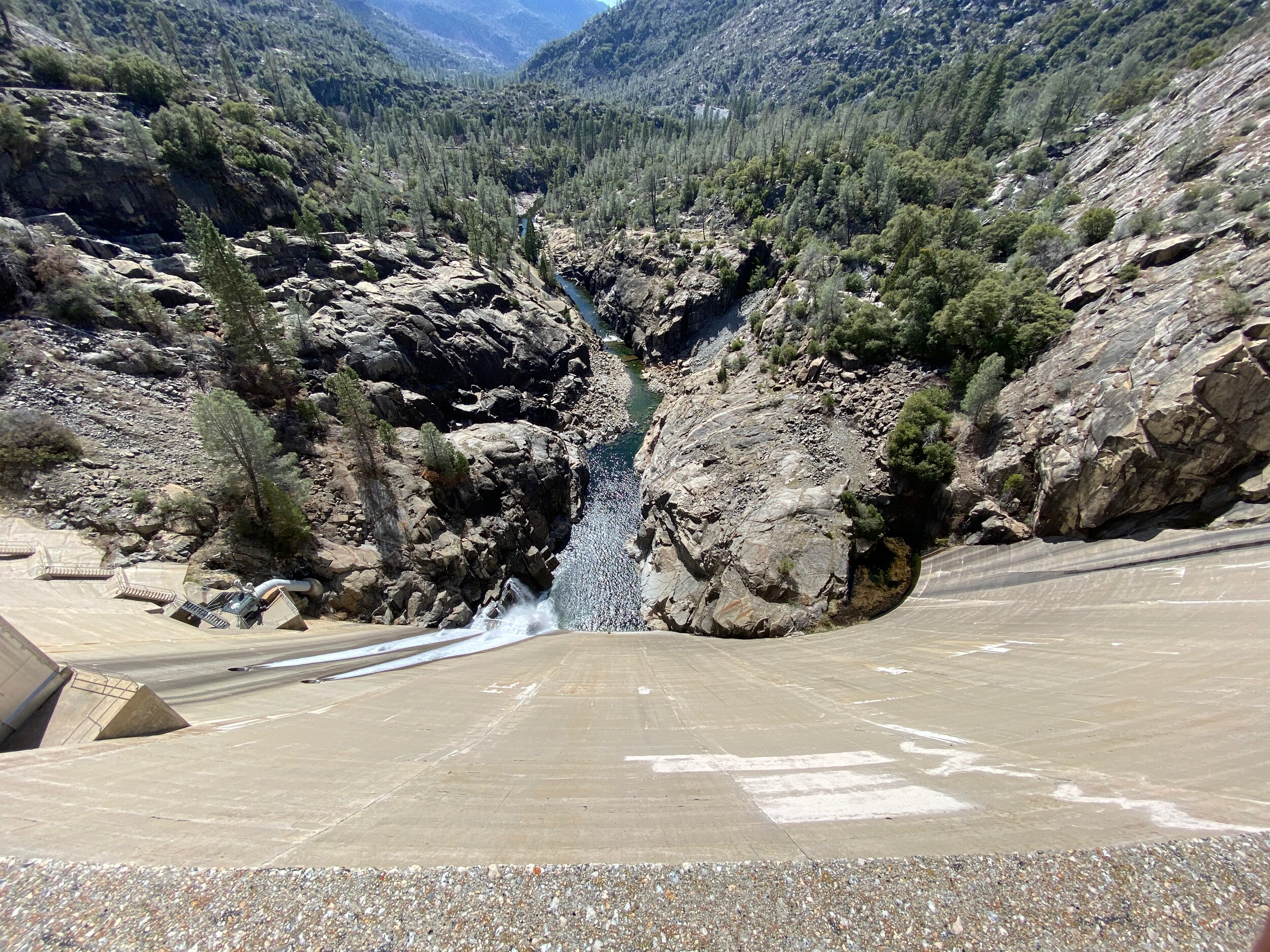
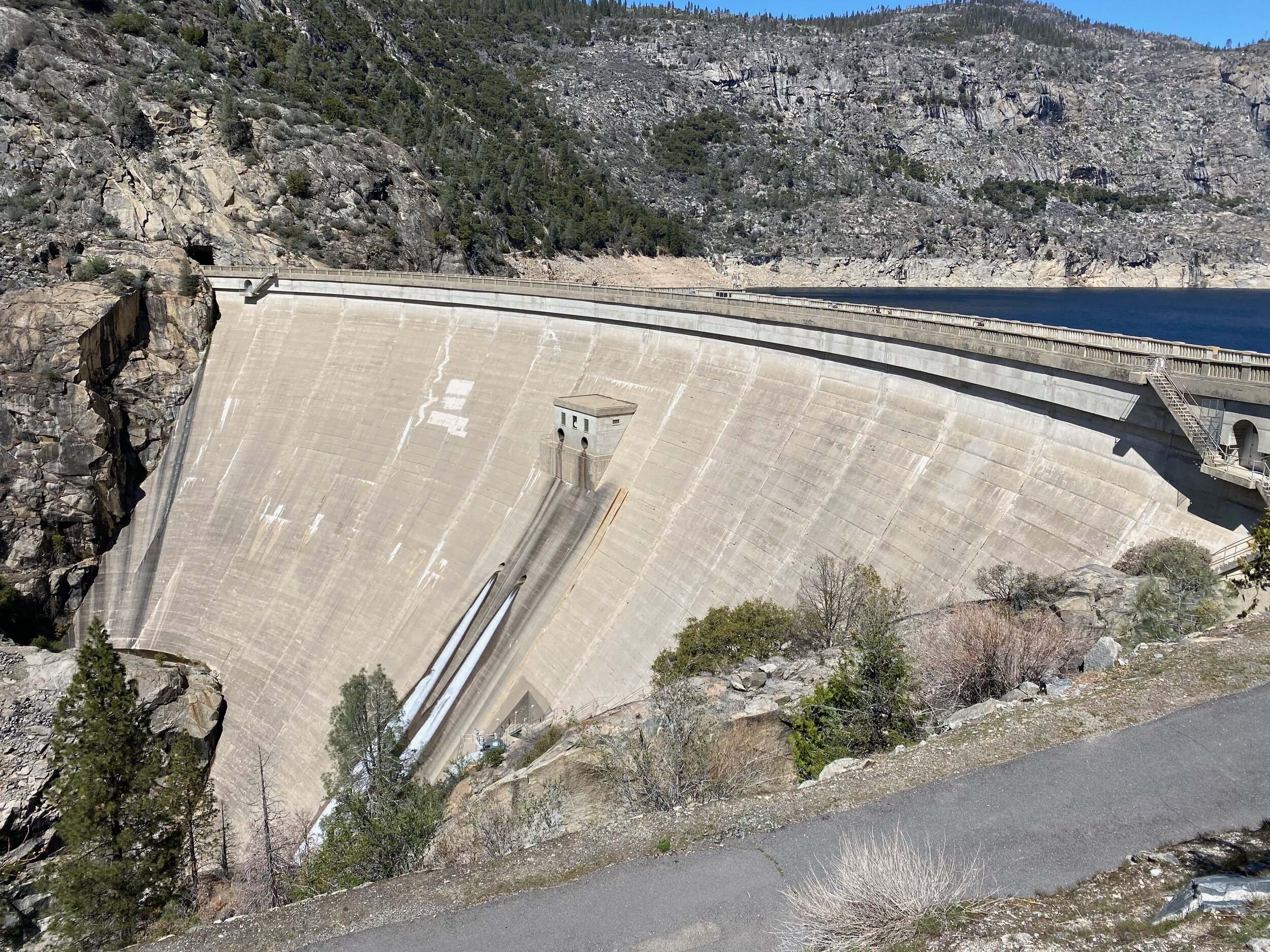
The short history goes like this. Seven years after the devastating 1906 San Francisco Earthquake, Congress passed the controversial Raker Act that ultimately cleared the way to build a dam and reservoir on public lands - in a newly established National Park no less! Thus began the 20-year Hetch Hetchy Water and Power Project. The informative sign on the dam explains that "the complex system of tunnels, pipelines and facilities…transports snowmelt 167 miles entirely by gravity, without the use of pumps.”
Illustration of the full Hetch Hetchy Project. Source here.
By damming or “impounding” the Tuolumne River, a reservoir was created that goes back 8 miles up into the Hetch Hetchy Valley. On the other side of the dam, the water makes its way to the aqueduct that ultimately feeds down into the San Francisco Bay Area, but not before it is available to multiple hydro power plants.
The first plants, the Lower Cherry and Moccasin Powerhouses came online in the early 1920s and were fed by water flowing through the Canyon and Mountain Tunnels. The former was effectively replaced by the Holm Powerhouse in 1960 and in 1967, the Robert C. Kirkwood Powerhouse started commercial operation.
After reading about the penstock pipeline, I had to drive all the way down the mountain to go see it first-hand. At sure enough, it leads right into the Kirkwood Powerhouse.
Both the Moccasin and Kirkwood Powerhouses use the water to drive turbines. At the Kirkwood site pictured below, there are now 3 Pelton Wheel-powered turbines which collectively deliver 124 megawatts (MW) which is also expressed as an annual average of 549 million kilowatt hours (KWh).
The Pelton Wheel introduced in 1870 uses the force of flowing water to turn a turbine and has replaced the previous “overshot” water wheel design used in early grain mills.
For reference, a megawatt is the energy required to provide a year’s worth of power for around 500 homes. New York City uses 11,000 MW every day!
All told, the complete Hetch Hetchy hydropower system produces about 1.7 billion kilowatt hours per year, enough to meet 20% of San Francisco's electricity needs.
My takeaways
Despite the permanent(?) flooding of another magnificent valley, Hetch Hetchy is still a beautiful area to explore, especially on foot. I am always impressed when I encounter a modern engineering marvel like the O'Shaughnessy Dam and the power plants and aqueduct systems that accompany it. And above all, I am intrigued to learn that we’ve been utilizing natural water sources as a source of power for centuries. More recently, we have mastered how to generate hydroelectric power and, in the right topographical areas, it remains one of the proven staples of clean, renewable energy.
